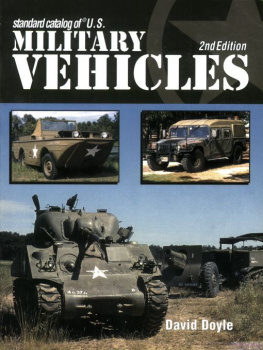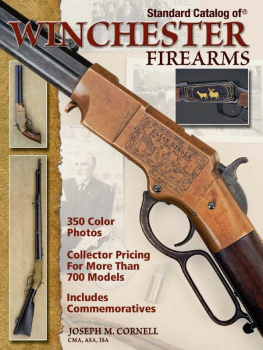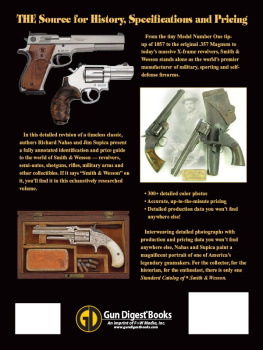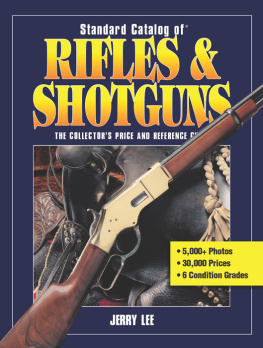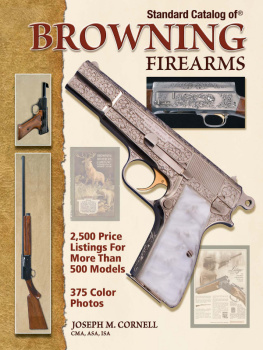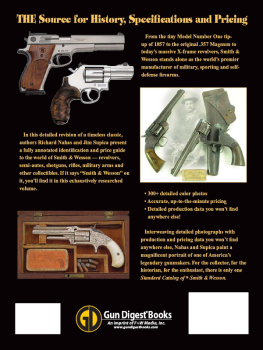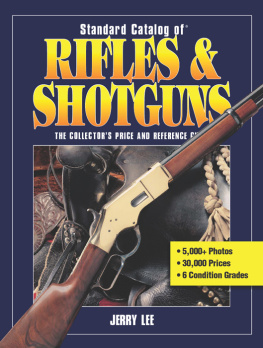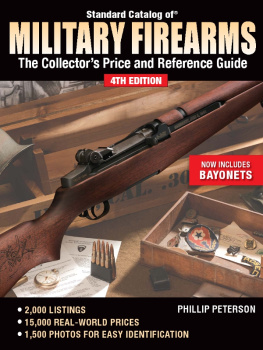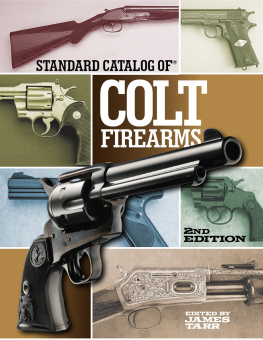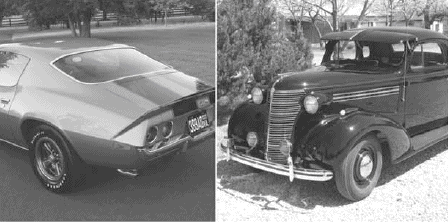Both sections of the book have been enhanced by integrating material from several of our more recent catalogs into the previous marque database. The book includes extensive single-model research done for last years Standard Catalog of Camaro 1967-2002 and Standard Catalog of Chevelle 1964-1987 and Standard Catalog of V-8 Engines. You will probably also notice extensive improvements to the serial number decoding based on VIN system cards issued annually by General Motors Service Operations. We do realize that the Camaro and Chevelle data includes information (such as option installation rates) that we havent yet finalized for all Chevrolet products. We felt that this information would be useful to enthusiasts of these models and should not be omitted.
Similarly, the Corvette section of this catalog has been improved with data from the Standard Catalog of Corvette 1953-2001, which was wrapped up in the latter title year as the first of our new color Standard Catalogs. Even this enhanced Corvette database has been further refined by integrating new research carried out for the Standard Catalog of V-8 Engines and by adding full data for 2001, 2002, and 2003 Corvettes.
Standard Catalogs are always prone to being nit-picked after they are published, simply because there are many facts in them. A constant frustration is the comment made by many critics that, Since I found one error, how can I trust anything else in the book? Such statements seem similar to saying the United States has high unemployment when 95 percent of the people who want to work have a job. I will guarantee you there are errors in this catalog, but it is also my sincere belief that were in the A+ range as far as getting things right. In addition, each subsequent edition gets better. And this is the best Standard Catalog of Chevrolet that weve ever put together.
In addition to all the above improvements, we have added hundreds of new images to this book to improve both the quality and accuracy of the identification photos. In addition, we have had the entire text proof read by Chevrolet experts like Pinky Randall and Bob Hensel to try to catch things that slipped by our editors pen. Please read and enjoy. Should you spot a fact or photo that you question, please tell us and help us make those future editions even better.
Introduction
Buggy maker Billy Durant was a successful Flint, Michigan, businessman when he approached race driver Louis Chevrolet about designing a car in 1909. It took until November 3, 1911, to start Chevrolet Motor Car Co. The next year the large Classic Six was introduced. Chevy adopted the now-famous bow-tie emblem in 1914. It was supposedly based on the wallpaper in a French hotel where Durant once stayed.
In 1915, Chevy challenged the Ford Model T with a new car called the 490, which sold for $490. Within two years, 100,000 were sold a lot for the time. Its success made Chevy and Ford long-time rivals, but it wasnt until 1927 that Chevrolet knocked Ford from first place in sales. After that, Chevy was at the top all but four times through 1982.
The 1929 introduction of a six-cylinder engine priced the same as a four made Chevy Americas top family car. By 1930, the company could claim 7 million all-time sales, not bad at all when you consider that the 1 millionth Chevrolet was sold only four years earlier! Chevrolets Knee-Action of 1934 was the first independent front suspension. By the late 1930s, the famous Fisher all-steel turret-top body was another Chevrolet selling feature.
Bigger is better, Chevy advertised in 1941, and a larger company, larger product line, and larger car made it a big year with 1.6 million car and truck sales. However, it wasnt long before Flints most famous machine went to war, and civilian production halted for four years.
When the fighting was over, cars were hard to get at first, but one determined driver drove a 1948 Chevy over 6,000 miles, winning a race from Buenos Aires to Caracas. Within a year, all-new postwar models drove off the revitalized assembly lines in Flint and other Chevy factories across the United States. Powerglide automatic transmission was optionally available for Styleline and Fleetline models starting in 1950.
This dream decade sired some of the greatest Chevys, including the futuristic 1953 Corvette sports car, the classically styled 55 with its powerful new small-block V-8, the tail-finned 57 (an icon ever since), the custom-car-like 58 Impala, and the startling 59 gull-wing Chevrolet. Cevrolet also began to expand its family image with youthful innovations like Ram-Jet fuel injection, big-block Turbo-Fire V-8s, and sporty bucket seats and floor shifters.
Expansion continued in the 60s as the compact Corvair, the senior compact Chevy II, the midsized Chevelle, and the Camaro pony car all hit the market, greatly enlarging the annual list of Chevrolet offerings. It was also the age of high-performance options like the Super Sport, the Sting Ray, and the porcupine-head V-8. For luxury lovers, the Caprice was created and the Monte Carlo wasnt far behind.
As the 70s dawned, the sun was setting on the American muscle car, which was sent to a premature grave by the politicians and insurance companies, but not before Chevrolet launched some great examples, such as the awesome LS6 Chevelle and the get-down-to-business-in-a-hurry Heavy Chevy. Things changed after 1972, but Chevrolet was quick to react with a new Monte Carlo that took Car of the Year honors from Motor Trend magazine for 1973.
Chevrolets answer to the market-robbing imports was the 76 Chevette, and by the next year even the Car of the Year (again) Caprice was down-sized. A special Silver Anniversary Corvette paced the Indy 500 in 1978, and the next year the company put together a Monza that was counted as its 100-millionth all-time assembly.
The revolution continued in 1980 with Chevys first front-wheel-drive model, the Citation. A year later, the Cavalier was heralded as the latest import fighter. Car of the Year was an honor reclaimed by an all-new Chevy Camaro when 1982 rolled around. This sleek sportster brought a new high-tech high-performance trend movement back to Detroit. The International Race of Champions pitting Camaro against Camaro led to the new IROC version of the Z28 that throbbed the Heartbeat of America in 1985. The Italian-sounding All-American twins known as Corsica and Beretta arrived in 1988, and in 1989 the import-inspired GEO line arrived in Chevrolet dealerships. Guess what was Car of the Year in 1991? The aerodynamic Caprice Classic LTZ, of course! Twelve months later the Camaro celebrated its 25th anniversary and it got to pace the Indy 500 again in 1993.




